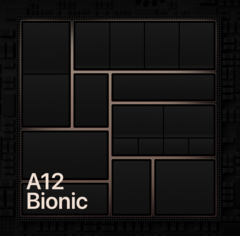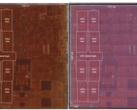The 2020 Apple iPad Pro is powered by the new A12Z Bionic SoC. The Z moniker is a strange departure from Apple's tradition of offering a variant of the current iPhone's SoC (A13 Bionic) for the iPad. The primary difference between the A12X Bionic and the A12Z Bionic appears to be the presence of an additional GPU core in the latter. But what would prompt Apple to release a whole new chip just with one minor difference? Or, is it really a whole new chip?
We reached out to TechInsights, experts in revealing the innards of microprocessors, to see whether the A12X really had seven GPU cores or did Apple have any tricks up its sleeve. Turns out that our suspicion was correct.
TechInsights wrote back to us saying,
Yuzo Fukuzaki, one of TechInsights’ Senior Technology Fellows, has confirmed that yes A12X physically has 8 GPU cores.
As for the A12Z, we are planning to conduct floorplan analysis to confirm any differences from the A12X."
Essentially what this means is that, the A12X and A12Z are the same physical chip (pending the results of the A12Z floorplan analysis) with the same physical number of CPU and GPU cores. Anandtech feels that the A12Z could, in fact, be a re-binned variant of the A12X. Recent comparative benchmarks have also shown that the A12Z offers minimal performance improvements compared to the A12X.
There can be several speculative reasons as to why Apple chose to do this. It is not uncommon to see chip makers disabling physical cores and enabling them in higher SKUs. For instance, the NVIDIA Titan RTX has all 4,608 CUDA cores enabled while the RTX 2080 Ti offers only 4,352 cores despite both using the TU102 GPU.
The other likely explanation is that Apple's decision to disable one GPU core in the A12X could have been deliberate. Enabling the latent core in an interim refresh like the A12Z would save the company from having to develop an A13X and instead directly focus on the (5 nm?) A14X that is slated to debut with the 5G iPad Pro later this year.
A12X or A12Z, Apple's chips are pretty powerful in their own right and customers already owning a 2018 iPad Pro need not really worry that their favorite tablet's processing prowess has become outdated.
Source(s)
Own























